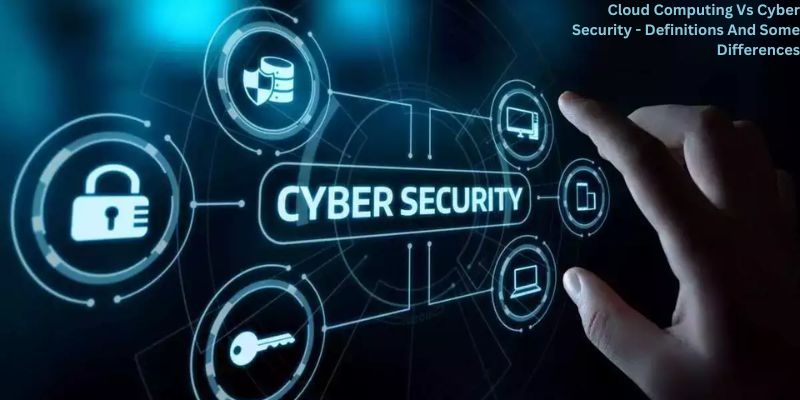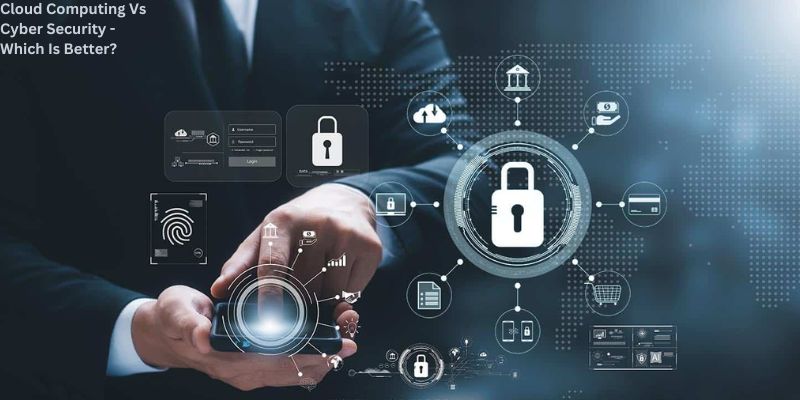Businesses and people alike are becoming more and more dependent on technology in today’s digital era for a variety of daily activities. From storing sensitive data in the cloud to ensuring the security of personal information, both cloud computing vs cyber security play crucial roles in safeguarding our digital world. But how do these two concepts intersect, and what are the implications for businesses and individuals alike? Join newtimezz.com as we delve into the complex and ever-evolving realm of cloud computing vs cyber security. Are you ready to unlock the secrets of this intriguing juxtaposition? Let’s dive in useful technology information below!
Contents
1. Cloud Computing Vs Cyber Security – Definitions And Some Differences

About Cyber Security
- Cybersecurity is the process of preventing unwanted access, theft, and damage to computer systems, networks, and data.
- The main goal of cybersecurity is to protect systems and data against online attacks.
- Cybersecurity addresses a range of online dangers, including ransomware, malware, phishing, and other online assaults.
- Data and system availability, confidentiality, and integrity are all preserved via cybersecurity.
- The protection of systems and data within an organization is the focus of cybersecurity.
- Specialized security standards, risk management, and incident response are necessary for cybersecurity.
- A variety of security technologies are used in cybersecurity, including antivirus software, firewalls, intrusion detection systems (IDS), and security data and event management, or SIEM, solutions.
- Depending on the organization’s security needs, cybersecurity solutions are either installed locally or on the cloud.
- Controlling access to information and systems within a company is a key component of cybersecurity.
- Cybersecurity is concerned with risk management, the detection of possible threats and weaknesses, and the implementation of effective countermeasures.
- Investing heavily in security staff, equipment, and training may be expensive when it comes to cybersecurity.
- In order to extend security solutions throughout a business, cybersecurity is less scalable and takes more work.
- Cybersecurity involves specific training in risk management, incident response, and security regulations.
- Cybersecurity tools interact with an organization’s current IT setup.
- A company’s brand, customer trust, and financial viability may all be negatively affected by cybersecurity breaches.
- The IT, legal, conformity, and risk management divisions of a firm must work together to ensure cybersecurity.
About Cloud Computing
- Software, preservation, and processing power are all types of computing services that may be delivered through the internet as “cloud computing” services.
- Delivering computer services over the internet is the main goal of cloud computing.
- Security breaches, theft of identities, and loss of authority over sensitive data are security concerns that cloud computing addresses.
- Reliable, scalable, and economical computer services are provided through cloud computing.
- Providing computer services to a variety of consumers is what cloud computing is all about.Understanding the structure of clouds, scaling, and resource allocation are necessary for cloud computing.
- Although from the standpoint of the service provider, cloud computing places a strong emphasis on risk management by guaranteeing the security of customers’ data and systems.
- When using cloud computing, consumers may save money by only paying for the resources they really utilize.
- For the security and dependability of cloud services, cloud computing also needs cooperation from clients and cloud service providers.
2. Cloud Computing Vs Cyber Security – The Similarities In IT

The following are some instances when cloud computing vs cyber security are similar:
- Both are essential parts of the infrastructure for modern information technology.
- Both entail safeguarding information, programs, and networks from intrusion, theft, and other online dangers.
- To stay up with new threats and technology, both are continually evolving.
- Both call for a proactive strategy to find and stop security vulnerabilities.
- Both involve knowledge of risk management and technology.
- Both have a responsibility paradigm where customers are in charge of protecting their cloud-based data and apps.
- To guarantee the best performance and security, both require routine upgrades and maintenance.
- Both entail a dense network of interconnected technology, people, and processes.
- Both entail keeping an eye out for suspicious behavior and odd conduct.
- Security measures like firewalls, systems for detecting and preventing intrusions, and encryption are necessary for both.
- Both require constant education and training to remain abreast of the newest security risks and technology.
- Both need adherence to a variety of legal requirements, including HIPAA, GDPR, and PCI DSS.
- Both require doing risk analyses to find possible weaknesses and threats.
- For both, incident response strategies are necessary in the event of a security breach.
- Both have an influence on a variety of organizational functions, including IT, business operations, and strategy.
3. Cloud Computing Vs Cyber Security – Which Is Better?

In today’s digital environment, both are essential for companies and organizations. When employing cloud computing services, which are frequently targeted by hackers, businesses must secure the security and privacy of their data and equipment. To safeguard cloud resources, it is crucial to implement a cybersecurity plan. In order to protect their security, privacy, and productivity in the digital era, businesses must give priority to both cloud computing vs cyber security.
Conclusion
In conclusion, the debate between cloud computing vs cyber security highlights the need for a balanced approach in today’s digital landscape. While cloud computing offers numerous benefits such as scalability, cost-effectiveness, and accessibility, it also introduces certain vulnerabilities that must be addressed through robust cyber security measures. Organizations must prioritize the protection of sensitive data and adopt a multi-layered approach to safeguard against cyber threats.
By implementing strong encryption protocols, conducting regular vulnerability assessments, staying updated with the latest security patches, and educating employees about best security practices, businesses can leverage the advantages of cloud computing while minimizing potential risks. Ultimately, achieving a secure and resilient cloud environment requires a continuous commitment to enhancing cyber security measures and adapting to ever-evolving threats.





